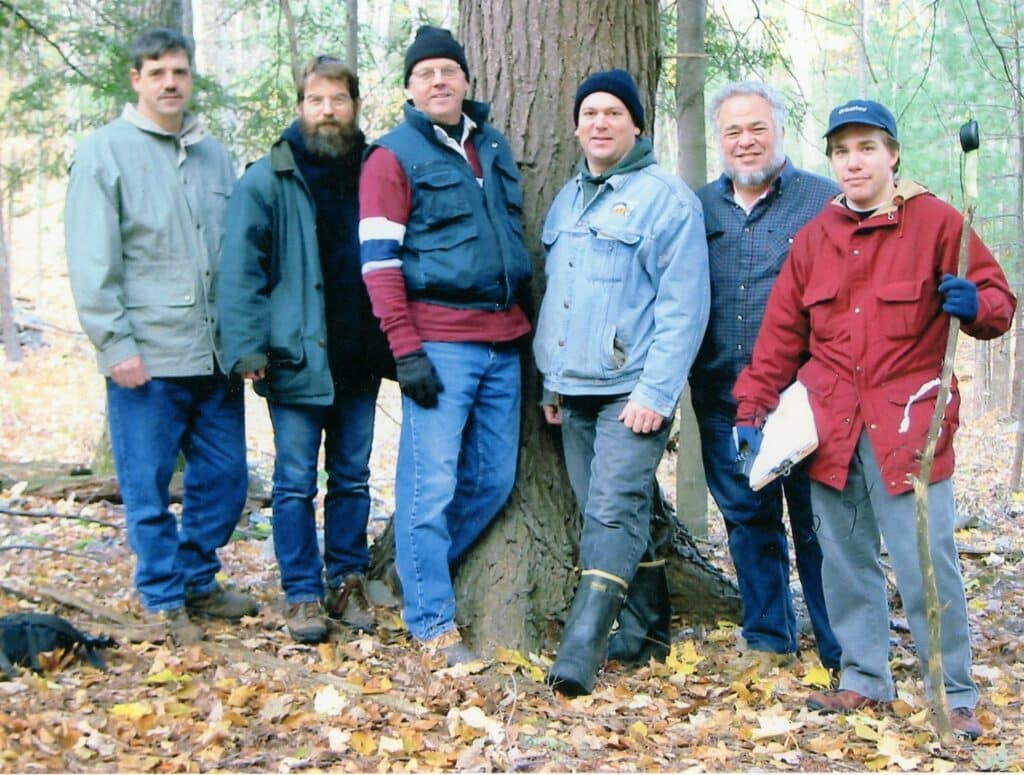Forestry Stewardship
Forest History
Camp Deerpark was founded in 1969 when the New York City Mennonite churches purchased the Winkler’s Country Club, which was previously owned by the George Brandt family. In the mid 1970s some logging was done at Camp Deerpark in the Orange Trail area on the south side of Brandt Road. Unfortunately, at that time the general consensus among the constituency was that the logging was far too aggressive and that it had left the forest with unacceptable damage.
The idea of logging at Camp Deerpark was again raised in the summer of 1996 when Dennis Sharp, the father-in-law of Ken Bontrager, suggested that the Camp Deerpark woods was full of adult trees ripe for harvest. When Ken Bontrager brought the idea to the camp board they wisely turned it down, citing the destruction caused by the 1970s logging. In the fall of 1997 when the North Bronx Mennonite Church held their church retreat, Wayne and Annie Shreffler invited their neighbors, Chuck and Elysa Hammond Peters. That weekend Dr. Chuck Peters of the New York Botanical Garden had an opportunity to hike in the woods at Camp Deerpark. Chuck and Ken began to talk about a forestry program that evening over coffee and pumpkin pie. Chuck introduced the principal of sustained-yield forestry, which received complete support from the board.

From the spring of 1998 to the summer of 2000, volunteers and staff conducted a ten percent inventory of all forestland on the property, identified and marked all property lines, produced a map marking trails and roads, and with thanks to Kevin Coffey, a research assistant at the New York Botanical Garden, combined all the information in a data base.
What is Sustained Yield Forestry?
With detailed counting and measuring of trees, one can calculate the stock and annual growth of a given tract of forest. If a logging program only harvests the annual growth each year and leaves the stock intact, the forest will maintain itself and continue growing vigorously. A good analogy is that of a financial investment. One can spend the interest annually, but must take care to not diminish the principal. Sustained-yield forestry strives to harvest the interest (i.e. the growth) while safeguarding the principal (i.e. the growing stock). Unlike a financial investment, however, a forest management program continually increases the growth and health of the overall forest. The oldest and largest trees are harvested first because they are most susceptible to disease, and they have large crowns that suppress the growth of smaller trees.
What Did the Inventory Tell Us?
While there are more than twenty-five species of trees on the 277 acres at camp, there are four primary species: white pine, red oak, chestnut oak, and white oak. The inventory revealed 6000 merchantable trees. (A merchantable tree is one that has value at a local sawmill and generally required to be14 inches in diameter, 16 feet tall, and straight.) The 1998–2000 inventory and subsequent calculations informed us our forest was growing at a rate of 29,000 board feet per year. A board foot is measured by a piece of wood 12 inches by 12 inches by one inch thick. The typical white pine tree contains approximately 160 board feet. Ben Cheek estimates 40–45 white pine trees are required to build one Promise Woods cabin. From 2002 through 2012 Camp Deerpark harvested 259,482 board feet, approximately 1600 trees, from our property. Remember we started with 6000 merchantable trees. Here is the exciting news. After 10 years of careful stewardship, harvesting approximately 1600 trees, and building four Promise Woods cabins; the 2012 inventory revealed that the Camp Deerpark forest is now growing at a rate of 45,000 board feet per year. The forest is younger, stronger, straighter, well balanced, and ready to serve our children and grandchildren. As Anabaptist Christians we believe that God has blessed us with this beautiful land and our responsibility is to do our best to be good stewards of this gift. The Camp Deerpark board and administration is grateful for the many volunteers who have helped us care for our woods.
—Written by Dr. Chuck Peters and Ken Bontrager.
Printed in Camp Deerpark Newsletter, fall 2017.
Dr. Chuck Peters, Curator of Botany, New York Botanical Garden in the Bronx.
